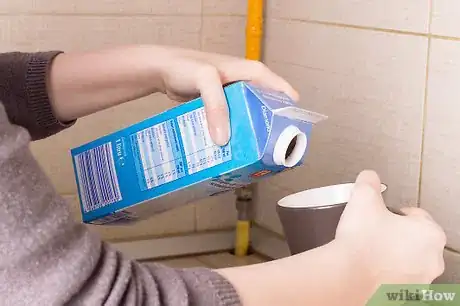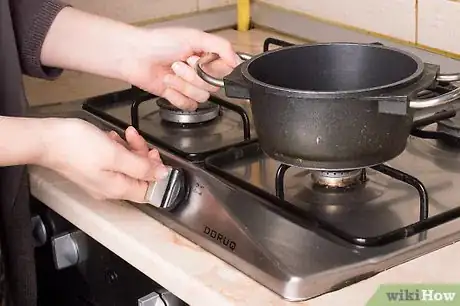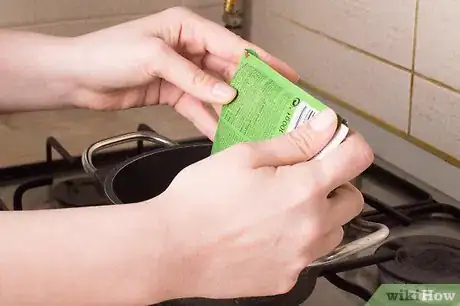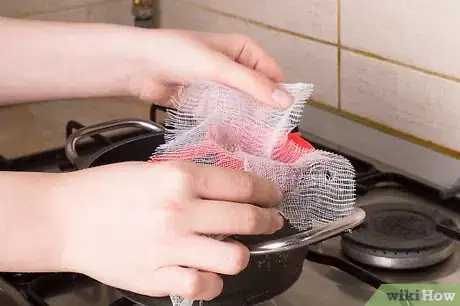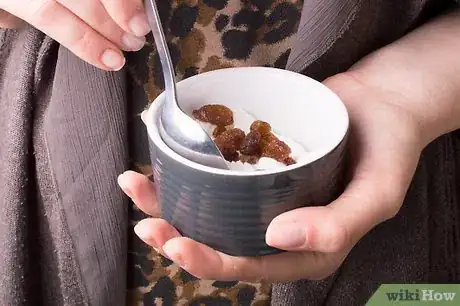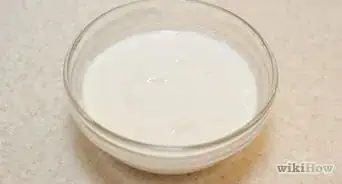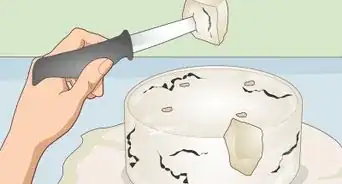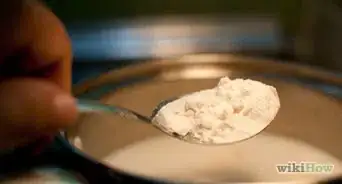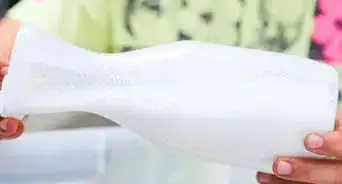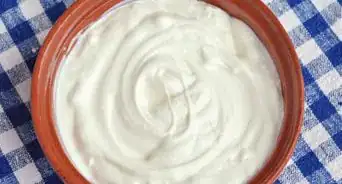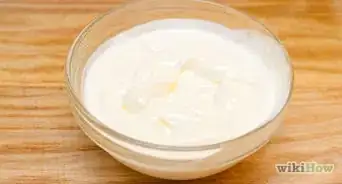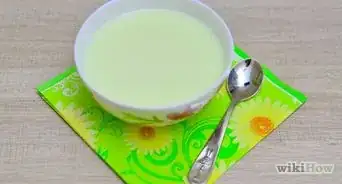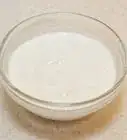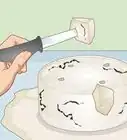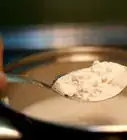X
wikiHow is a “wiki,” similar to Wikipedia, which means that many of our articles are co-written by multiple authors. To create this article, volunteer authors worked to edit and improve it over time.
This article has been viewed 24,640 times.
Learn more...
If your homemade yoghurt is sometimes a bit thinner than you might like, there are a couple of things that you can do to make the yoghurt thicker. Skip down to Step 1 to get started with a new process that may take more time than your current process, but it will be oh so worth the time spent.
Steps
-
1Use fat free milk to help make your yoghurt thicker. Try fat free milk and you will notice that it makes a thicker yoghurt than regular milk.
-
2Add 1/2 cup of milk powder to the milk before you start heating it. This, too, helps thicken the final product.Advertisement
-
3Heat the milk to a higher temperature - 200ºF (95ºC). Keep the milk at the higher temperature for a full 20 minutes, stirring occasionally and monitoring continually.
- This is a higher temperature than is normally recommended and allows the moisture in the milk to evaporate, resulting in a thicker yoghurt.
- If you have one, use a double boiler as this will make it easier to maintain the temperature with little stirring.
- Make sure to use an accurate thermometer that covers the temperature range 90-212ºF (30-100ºC) and do not let the milk get too hot or become scorched. A candy thermometer is great for this.
-
4Allow the milk to cool sufficiently, then add the yoghurt culture. It is best to use cold running water reduce the temperature below 120ºF (50ºC), but don't let it to go below 90ºF (32ºC).
-
5Let the yoghurt sit for a minimum of seven hours at a temperature close to 110ºF (45ºC). The longer the yoghurt sits, the thicker it will become, so let it sit longer than you normally would, certainly for at least seven hours.
-
6Strain the yoghurt for a longer time. It is very important to strain the yoghurt through a colander lined with cheesecloth to remove whey, the yellowish, watery liquid in the yoghurt. Place the strainer over a bowl to catch the whey and place the assembly in your refrigerator during the straining process. You can strain it for a few minutes or overnight, depending on how thick you want it to be - the longer, the better for creating thick yoghurt.
-
7Use the yoghurt from this batch to start the next batch.
Advertisement
Community Q&A
-
QuestionWhat are materials when you are making yoghurt?
 summerCommunity AnswerThe production of yogurt requires only two ingredients: milk and live cultures. However, producers may also include, dry milk powder, stabilizers, fruit, and sweeteners. Milk is the main ingredient used when making yogurt. It can be cream, whole, low-fat, or skim.
summerCommunity AnswerThe production of yogurt requires only two ingredients: milk and live cultures. However, producers may also include, dry milk powder, stabilizers, fruit, and sweeteners. Milk is the main ingredient used when making yogurt. It can be cream, whole, low-fat, or skim. -
QuestionWhat are the ingredients needed when making yoghurt and what can I use to colour and flavour the yoghurt?
 Community AnswerFor the first question: all you need for making yoghurt is milk (preferably whole) and a starter. You can also use premade yoghurt instead of the starter. For the second question: you can use anything you want! I usually add vanilla extract when I make yoghurt because I just like it more, and you can always mix in food coloring. After the yoghurt is done, you can mix in jam, honey, or fruit for more flavor.
Community AnswerFor the first question: all you need for making yoghurt is milk (preferably whole) and a starter. You can also use premade yoghurt instead of the starter. For the second question: you can use anything you want! I usually add vanilla extract when I make yoghurt because I just like it more, and you can always mix in food coloring. After the yoghurt is done, you can mix in jam, honey, or fruit for more flavor. -
Question1 kg of milk is how many cups?
 Community AnswerOne kilogram of milk is approximately four cups.
Community AnswerOne kilogram of milk is approximately four cups.
Advertisement
Warnings
- If the yoghurt looks or smells off, discard the batch and start a new one with a different culture. The yoghurt should have a fresh, natural, pleasant and somewhat cheesy smell.⧼thumbs_response⧽
Advertisement
Things You'll Need
- Pot - a double boiler is optional (make your own with two pots)
- Spoon - wooden or metal
- Candy thermometer
- Containers with lid
About This Article
Advertisement

